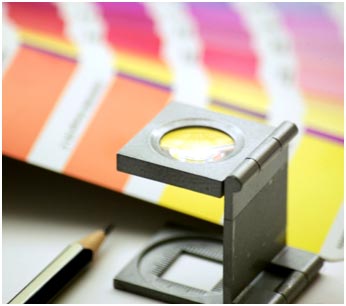Image Format

Bitmap: An image format that only defines an image in terms of black and white. A bitmapped image is generally used to define line art because its elements can only be black and white.
DPI or PPI (Dots per Inch/Pixels per Inch): The resolution of an image or the number of pixels are defined in the boundary of a square inch.
EPS (Encapsulated PostScript): File format that supports both vector graphics and bitmap images. Used for combination artwork or charts and graphs. Generally, an EPS file cannot be edited except by the software program that created it.
GIF (Graphic Interchange Format): Image format type generated specifically for computer use. Its resolution is usually very low (72 dpi, or that of your computer screen), making it undesirable for printing purposes.
JPEG or JPG (Joint Photographic Experts Group): Jpeg files can range from small amounts of lossless compression to large amounts of lossy compression. This is a common standard on the web, but the data loss generated in its compression make it undesirable for printing purposes.
Pantone Matching System (PMS): A colour scale used to precisely match colours for printing. Each hue has a coded number indicating instruction for mixing inks to achieve that hue.
Resolution: The density of dots for any given output device. The unit of measurement is dots per inch (dpi).
TIFF (Tagged Image File Format): TIFF files can include colour or greyscale information. The quality of the image is determined by its resolution or dpi. If the resolution is too low, the image will appear jagged or have a stair-stepped effect. Once the resolution has been determined, it cannot be upgraded or increased to improve quality.
Vector Graphics: Illustrations composed of line and curve segments, created in such programs as Illustrator, FreeHand, and CorelDRAW.




